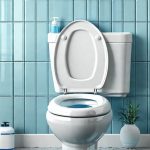The seemingly simple act of using a public toilet can be fraught with anxiety for many people. It’s a surprisingly common struggle, often hidden beneath layers of embarrassment and shame. We tend to assume everyone else navigates these spaces with ease, leading to feelings of being ‘othered’ or uniquely troubled. This isn’t the case; anxieties around hygiene, vulnerability, judgment, and even bodily functions themselves can create significant distress when faced with public restroom facilities. It impacts daily life, influencing travel plans, social engagements, and overall well-being.
This anxiety isn’t frivolous. It’s often rooted in deeply held beliefs about cleanliness, control, and self-perception. Societal pressures around body image and perfection contribute to the fear of being observed or judged while performing a very private act. Furthermore, negative experiences – real or imagined – can become ingrained memories, triggering anticipatory anxiety whenever encountering a public toilet. Understanding the nuances of this struggle is the first step towards managing it and reclaiming a sense of calm and control. It’s about acknowledging that these feelings are valid and seeking strategies to navigate them effectively.
The Roots of Toilet Anxiety
The reasons behind struggling with confidence around public toilets are incredibly diverse, and rarely boil down to just one factor. Often, it’s an interplay of psychological, social, and even physical elements. Generalized anxiety disorder can significantly amplify these concerns; individuals prone to worry will naturally fixate on potential negative outcomes within the restroom context. Social anxiety plays a major role too – the fear of being observed or evaluated by others while performing a vulnerable act is incredibly potent. Many people fear appearing ‘dirty’ or unhygienic, leading to obsessive checking behaviors and heightened discomfort.
Beyond broader anxieties, specific experiences can also contribute. A past negative experience in a public toilet – perhaps encountering an unclean facility, feeling judged, or experiencing an embarrassing moment – can create lasting trauma and anticipatory anxiety. This is often compounded by catastrophic thinking, where individuals imagine the worst possible scenario unfolding (e.g., getting stuck, being seen as ‘disgusting’). Even media portrayals of dirty public toilets can reinforce negative perceptions and fuel anxieties. It’s vital to remember that these fears are often disproportionate to the actual risk involved.
Finally, health anxiety can play a significant role. Concerns about germs, contamination, or potential illness can lead to obsessive handwashing and avoidance behaviors related to public restrooms. Individuals with Irritable Bowel Syndrome (IBS) or other gastrointestinal conditions may experience heightened anxiety due to unpredictable bodily functions, fearing accidents or needing urgent access to a toilet. The core of the problem is rarely about the toilet itself, but rather the anxieties it triggers within an individual’s unique psychological landscape.
Identifying Your Specific Triggers
Pinpointing exactly what aspects of public toilets cause you the most distress is crucial for developing effective coping strategies. This requires some self-reflection and honest assessment. Are you more anxious about:
- The cleanliness (or perceived lack thereof)?
- Being observed by others?
- Potential smells or sounds?
- Having an accident or losing control?
- Germs and contamination?
- A combination of these factors?
Keeping a journal can be extremely helpful. Whenever you experience anxiety related to public toilets, write down the specific details: where you were, what was happening, your physical sensations (e.g., racing heart, sweating), and your thoughts at the time. This will help you identify patterns and pinpoint your unique triggers. For instance, you might realize that you’re more anxious in smaller restrooms or those with poor ventilation. Or perhaps your anxiety spikes when you hear someone else enter the restroom.
Once you’ve identified your triggers, you can start to develop targeted coping mechanisms. This is about moving beyond vague anxieties and addressing the specific fears driving your discomfort. It also involves challenging negative thought patterns. Are your fears realistic? What evidence supports them? Often, we overestimate the likelihood of negative events occurring and underestimate our ability to cope with them.
Gradual Exposure Therapy – A Gentle Approach
One highly effective technique for overcoming toilet anxiety is gradual exposure therapy. This involves slowly and systematically exposing yourself to feared situations in a controlled manner, starting with less anxiety-provoking scenarios and gradually working your way up to more challenging ones. It’s important to emphasize that this should be done at your own pace and without pressure.
Here’s an example of how you could approach it:
- Visualization: Start by simply visualizing yourself calmly using a public toilet. Focus on positive imagery and imagine successfully navigating the situation.
- Low-Stress Exposure: Begin with restrooms that feel relatively safe – perhaps one in a quiet café or a friend’s home. Practice going in, quickly assessing the cleanliness (without obsessively checking), and leaving without actually using it.
- Slightly More Challenging: Gradually progress to more challenging scenarios, such as using a public toilet in a less familiar environment.
- Full Exposure: Eventually, work towards comfortably using public toilets in situations that previously triggered significant anxiety (e.g., at work, while traveling).
The key is to repeatedly expose yourself to the feared situation until your anxiety naturally diminishes. This process helps you learn that your fears are often unfounded and that you can cope with discomfort. It’s also helpful to practice relaxation techniques – deep breathing exercises or progressive muscle relaxation – during exposure therapy. Remember, progress isn’t always linear; there will be setbacks along the way. Be patient with yourself and celebrate small victories.
Reframing Negative Thoughts & Self-Compassion
A significant component of overcoming toilet anxiety lies in challenging negative thought patterns and cultivating self-compassion. Often, we engage in harsh self-criticism – judging ourselves for feeling anxious or believing we should be able to ‘just get over it.’ This only exacerbates the problem. Instead, practice reframing your thoughts. When you notice yourself thinking negatively (e.g., “I’m going to look disgusting if someone sees me”), challenge that thought with a more balanced perspective: “Everyone uses the toilet. It’s a normal bodily function. Even if someone did see me, it wouldn’t be a catastrophe.”
Self-compassion involves treating yourself with the same kindness and understanding you would offer to a friend struggling with the same issue. Acknowledge that your anxiety is valid and that it’s okay to feel vulnerable. Remind yourself that many people share this struggle and that you are not alone. Practice self-soothing techniques – such as listening to calming music, taking a warm bath, or spending time in nature – when feeling overwhelmed.
Boldly accepting your feelings, rather than fighting them, is a powerful step towards reducing anxiety. It’s about recognizing that vulnerability is part of the human experience and that seeking support is a sign of strength, not weakness.
Building Resilience & Long-Term Management
Successfully managing toilet anxiety isn’t just about addressing individual instances; it’s about building long-term resilience and developing strategies to cope with future challenges. This requires ongoing self-awareness and commitment to healthy habits. It’s also helpful to remember that setbacks are normal, and don’t signify failure – they simply provide opportunities for learning and growth.
One effective strategy is mindfulness. Practicing mindfulness involves paying attention to the present moment without judgment. This can help you stay grounded in reality and avoid getting caught up in catastrophic thinking. When you find yourself feeling anxious about using a public toilet, take a few deep breaths and focus on your senses – what do you see, hear, smell? This can help shift your attention away from your fears and towards the present moment.
Another important aspect of long-term management is lifestyle adjustments. Ensuring adequate sleep, eating a healthy diet, and engaging in regular exercise can all contribute to reduced anxiety levels overall. Avoiding excessive caffeine and alcohol consumption can also be beneficial. Furthermore, building strong social connections and cultivating supportive relationships provides a buffer against stress and anxiety.
Finally, don’t hesitate to seek professional help if your anxiety is significantly impacting your quality of life. A therapist specializing in anxiety disorders can provide personalized guidance and support, as well as teach you more advanced coping strategies. Cognitive Behavioral Therapy (CBT) is particularly effective for addressing anxiety, as it helps you identify and challenge negative thought patterns and develop healthier behaviors. Remember that seeking help is a sign of courage, not weakness, and can be a transformative step towards reclaiming your confidence and freedom.





















